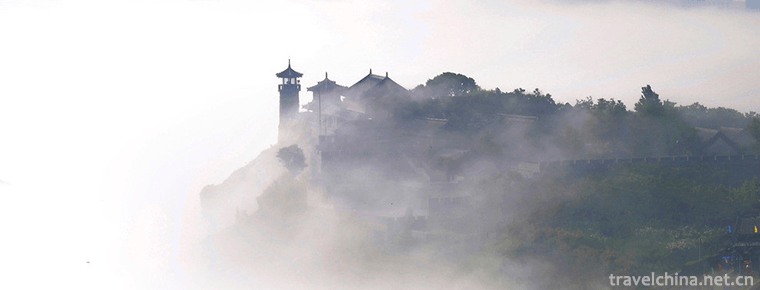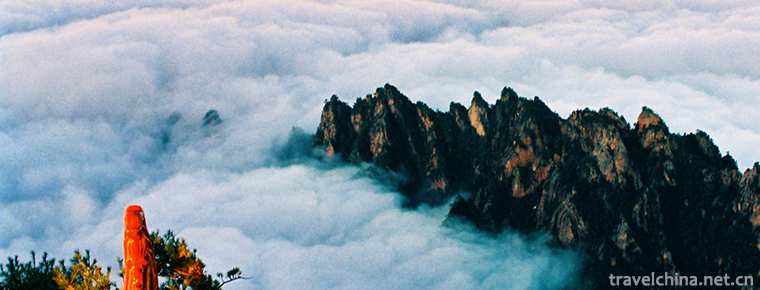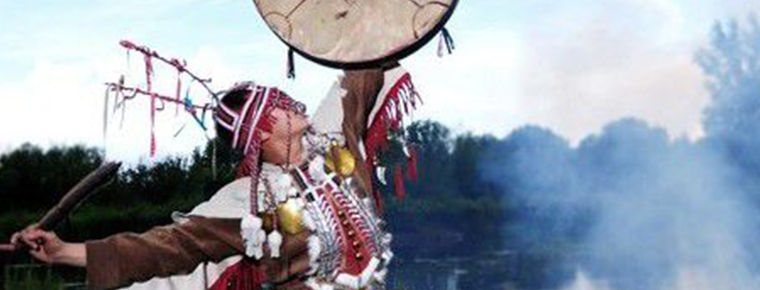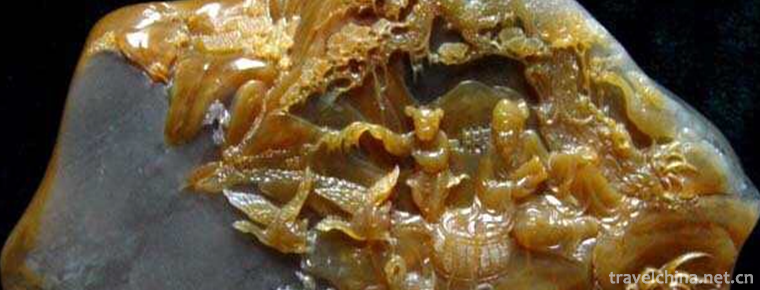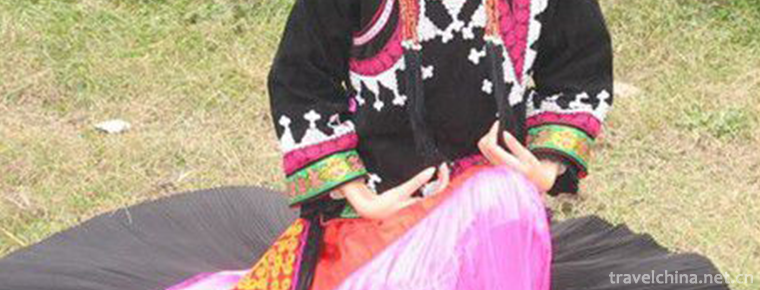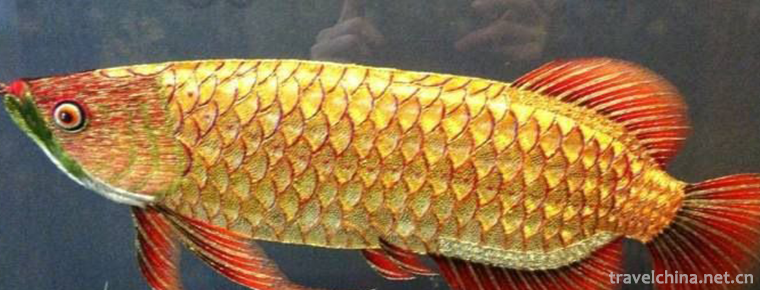Surface painting
Surface painting
Water and land painting Festival is a traditional religious painting. Originated in the Three Kingdoms Period, Buddhist monasteries prevailing from the Jin Dynasty to the Yuan, Ming and Qing Dynasties are an important Buddhist event held for the purpose of overtaking the dead and popularizing all the ghosts and gods on land and water. It is a folk cultural phenomenon that emerges and develops under the background of "the unity of the three religions". Land and water painting is a religious figure painting worshipped by the Land and Water Law Society.
On November 11, 2014, land and water paintings were approved by the State Council and listed in the fourth batch of national intangible cultural heritage list.
Historical Origin
Land and water law clubs, also known as "land and water fairs", "water and land fasts", "charity clubs" horse "charity clubs" and "seven fasts", are abbreviated as "land and water clubs", commonly known as "land and water clubs". They are all called "Saint Fan Shui Lu Pudu Ramadan Winning Club". They refer to the gathering of rescuers and rescued persons in the opening of law clubs. All participants can receive both excessive application of law and food and universal acceptance. Bitterness is a kind of grand law meeting which sets up a fasting to worship Buddha and gods to recommend the spirits and ghosts beyond the dead. It is the most solemn, grandest and longest ritual in Chinese religious activities. Waterfront painting emerged with the emergence of the Land and Water Law Society. It is a religious painting hanging in monasteries or private holding of the Land and Water Law Society. It is one of the indispensable sacred objects for holding the Land and Water Law Society. There is a cloud in a model vow of the Mid-Tang Dynasty unearthed from Tibetan ketone in Dunhuang at the end of Qing Dynasty: "So on this day, the courtyards were swept and the pavilions were strictly decorated. Buddhist monks were invited to set up their fasts to pursue their blessings..." At that time, on the "Dao Chang", there were various Buddhist banner wallcharts with religious figures as the theme, that is, the early land and water paintings. According to the existing literature, the early images of the Water and Land Law Society began in the late Tang and Five Dynasties, and gradually formed a system. Legend has it that the Southern Water and Land Society of Pingyang City, Shanxi Province, was named after 120 water and land painting axes of Wu Daozi (685-758) in the Tang Dynasty. Volume 23 of The Idol Talk in Chibei also has relevant records. Although this set of water and land paintings is the so-called works of Wu Daozi in the Tang Dynasty, in fact, it is not based on legends.
Through the spread and development of the Five Dynasties and the Song Dynasty, land and water painting has gradually formed into a complete set of scale. At that time, there were water and land halls and a complete set of water and land painting scrolls in Buddhist temples and Taoist concepts. For example, the main hall of Yanshan Temple in Fanshi Jin Dynasty in Shanxi Province was originally the water and land hall. The murals in the hall were painted by Wang Kui and Wang Dao in the third year of Zhenglong (1158). Unfortunately, the murals in the hall have been destroyed. During the Yuan and Ming Dynasties, the water and land paintings hanging on the waterway and land course were basically stereotyped. One hundred and twenty water and land paintings were painted in the West Water and Land Law Society built by the general monastery. As many as 200 axes of land and water paintings were used in the land and Water Law Societies built by the imperial court. These works are mostly painted by the masters of folk Taoist interpretation. They are precise and well-organized. Their contents include all the gods worshipped by the people. Their hanging lengths depend on the scale of the events. In addition, in this period, besides the complete set of scroll water and land portraits, special water and land halls appeared in Buddhist temples and Taoist concepts, and water and land frescoes with complete composition were painted.
Most of the land and water paintings preserved in the 21st century were painted in the Ming and Qing dynasties, especially in the temples of Shanxi and Hebei provinces. Although these temples were built in different times, most of them were painted after the Song and Yuan dynasties. Most of the existing water and land paintings in Shanxi are Ming Dynasty works. For example, the waist hall murals of Jishan Qinglong Temple (Shuilu Hall) are well preserved. Based on the investigation of architecture, murals style and relevant years, the murals of the whole hall should be completed in the early Ming Dynasty. The four-wall paintings of the temple used to depict immortals and ghosts, emperors and concubines, as well as Yincao prefecture, which advocated "retribution for cause and effect", suggesting that people should convert to religion to avoid suffering. The Ming murals of Dinglin Temple, Hunyuan Yongan Temple and Lingshi Zishou Temple in southern Shanxi also had merits of water and land. They were magnificent and full of figures, and were important works for studying the content and art of water and land paintings.
Inheritance Significance
Water and land paintings provide information for the study of Buddhist history. From its origin to its prosperity, land and water law societies have infiltrated many contents of Taoism, Confucianism and folk gods, from which we can learn the course of the Sinicization of Buddhism. In the early days of the founding of the People's Republic since the Tang and Song Dynasties, when the emperors ascended the throne, they built land and water law societies to recommend the dead of loyal ministers, martyrs and refugees, in order to appease the people's hearts and pray for social peace; and land and water paintings are also a historical study of the integration of Confucia Provide information. After Sui, Tang and Yuan dynasties, Confucianism, Buddhism and Taoism merged, but we mostly studied them from abstract literary materials. Water and land paintings provided us with very specific image data, from which we can see that the three religions of Confucianism, Buddhism and Taoism, gods, Buddha and immortals, organized in a mythological system in an orderly manner according to their levels and functions, are neither contradictory nor reasonable. Faith folklore research provides information. Buddha, gods and immortals in land and water paintings are worshipped by the Chinese people. From land and water paintings, we can study the Chinese people's belief in folk customs and belief psychology. Ming Dynasty's land and water paintings are more standardized and secular. In the paintings, not only the skills of cheap team paintings and landscape paintings, but also the contents of many folk customs can be seen. The pictures include social customs, which provide vivid and intuitive image data for modern people to study history; water and land paintings provide information for the study of ancient Chinese costumes; water and land paintings describe the style and color of the costumes of the characters at that time in detail. In addition to the portraits of Buddha, gods and immortals, painters in ancient times depicted them according to pink books. The common costumes of ancient sages and sages were painted according to the costume system of the society at that time, which provided specific images for the study of costumes in ancient China. The costumes in modern Chinese drama are very similar to those in land and water paintings, and also can provide information for the study of the history of Chinese drama.
Master of Water and Land Painting
With the development of waterway and land painting, waterway and land painting has become a kind of Chinese religious painting. The founder of Buddhist painting is said to be Cao Fuxing, a famous painter in the Three Kingdoms Period. Later, many famous painters painted murals of various religious villages for monasteries. Gu Kaizhi, a famous artist in the Eastern Jin Dynasty, is not only good at drawing characters. Landscape, and the religious paintings are also outstanding in the painting world. There is a well-known story about the Vimo portrait he painted for the Wacoffin Temple in Luoyang. According to legend, he tried painting for a month behind closed doors, and opened an account for people to appreciate. The image of Vimo theory is clear and elegant. The image of "Lighting One Temple" and even "the giver bites the throat" instantly "makes the bait millions".

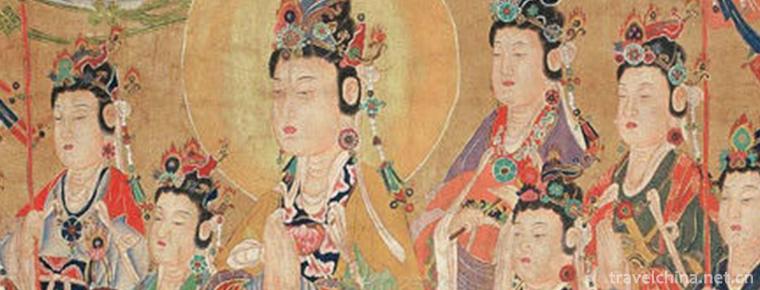
-
Penglaige tourist area
Penglaige Scenic Area, located in Danya Mountain, northwest of Penglai City, Shandong Province, is a national AAAAA-level tourist attraction with an area of 18,500 square meters.
Views: 104 Time 2018-12-08 -
Old boundary ridge of Funiu Mountain
Laojieling is located in the north of Xixia County, Nanyang City, Henan Province. It is located in the upper part of the south slope of Funiu Mountain.
Views: 131 Time 2018-12-09 -
Shaman Dance of Ewenki Nationality
Shaman dance of Ewenki nationality is a traditional dance of Ewenki nationality. It is a national cultural heritage of China and is spread in Genhe region of Inner Mongolia Autonomous Region..
Views: 157 Time 2019-04-28 -
Kazakh Aytes
Kazakh Aytes is a typical representative of Kazakh folk art, a competitive form of performance, is the most abundant content of Kazakh folk oral literature, the most influential literary type among th.
Views: 229 Time 2019-05-02 -
She nationality novel song
She nationality novel song originated from Bailukeng Village, Xinan Town, Xiapu County, Fujian Province. It was adapted and created by She nationality folk singers according to their national living c.
Views: 213 Time 2019-06-14 -
Shoushan stone carving
Shoushan Stone Carving is a traditional folk carving art. It is made of Shoushan Stone, which is produced in the northern mountain area of Fuzhou. It is a small carving for people to enjoy through spe.
Views: 111 Time 2019-06-15 -
Yi dress
The costumes of the Yi nationality are colorful, unique in style, and have nearly 100 kinds of shapes. Historically, because of the numerous branches and scattered residence of the Yi people, there ar.
Views: 174 Time 2019-07-12 -
Guangdong embroidery
Guangdong embroidery is the general name of Guangzhou embroidery (Guangzhou embroidery) and Chaozhou embroidery (Chaozhou embroidery). It is one of the four famous embroidery in China..
Views: 202 Time 2019-07-16 -
Topography and geomorphology of Luzhou
Luzhou city is a typical mountainous city with 56.14% of the total land area. It is mainly composed of high mountains (500-1000 meters above sea level) and middle mountain (1000-1902 meters above sea level). Taking the middle Yangtze River Valley as the lowest center, it gradually .
Views: 309 Time 2020-12-14 -
Mianyang economy
In 2019, the gross domestic product (GDP) of Mianyang City will reach 285.620 billion yuan, which will increase by 8.1% according to the comparable price. The growth rate is 0.6 percentage points higher than the average level of the whole province..
Views: 130 Time 2020-12-14 -
Transportation in Mianyang
By the end of 2018, Mianyang had 20146 km of highways, 412 km of expressways, 268 km of Railways and 57 civil aviation routes..
Views: 152 Time 2020-12-14 -
Dazhou Sports
By the end of 2019, Dazhou city has a total of 9 stadiums and stadiums, sports lottery revenue of 242 million yuan, and 694 new sports fitness projects for farmers. .
Views: 335 Time 2020-12-20
